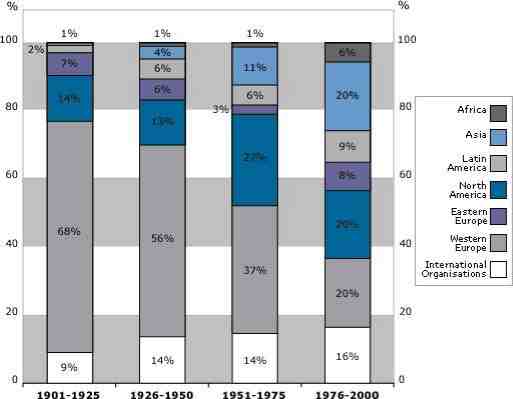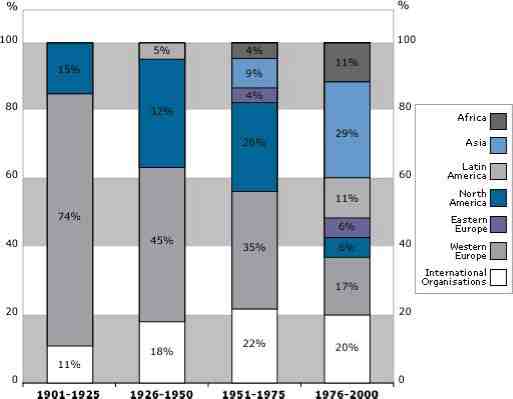Stockholm, Sweden – Nobel Peace Prize winners are increasingly chosen from among diverse nations, as more nominations for the honor are directed toward Africans, Asians, Eastern Europeans, and Latin Americans. Nominees as well as winners are spread more evenly across the globe as war-torn regions give host to those with the strength to work for peace. (below, Geographical distribution of Peace Prize laureates 1901-2000) 
In the earliest days of the Nobel Peace Prize, Europe possessed nearly three-quarters of all laureates. By last quarter of the 20th century, all regions had a significant share of prizes, with Asia receiving a plurality. Laureates and nominees now hail from widely diverse backgrounds and provide unique stories in the evolution of peace. The trend can be attributed to several factors.
Chart Showing Geographical Distribution of Nominees, 1901-2000

The list of 21st century laureates:
-
2006 Muhammad Yunus, Grameen Bank (Asia)
-
2005 Mohamed ElBaradei, International Atomic Energy Agency (Africa)
-
2004 Wangari Maathai, The Green Belt, planted 30 million trees in Kenya ( (Africa)
-
2003 Shirin Ebadi, Children’s Rights Support Association in Iran (Asia)
-
2002 Jimmy Carter (North America)
-
2001 Kofi Annan, United Nations (Africa)
Additional sources: An interactive map of the Peace Prize and World Conflicts Educational gamesare provided at nobelprize.org



















